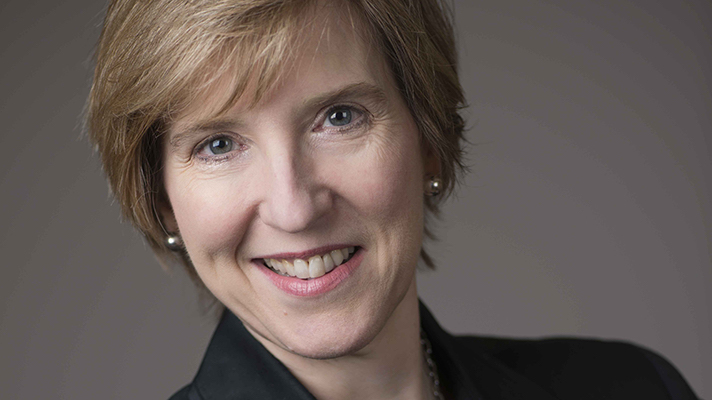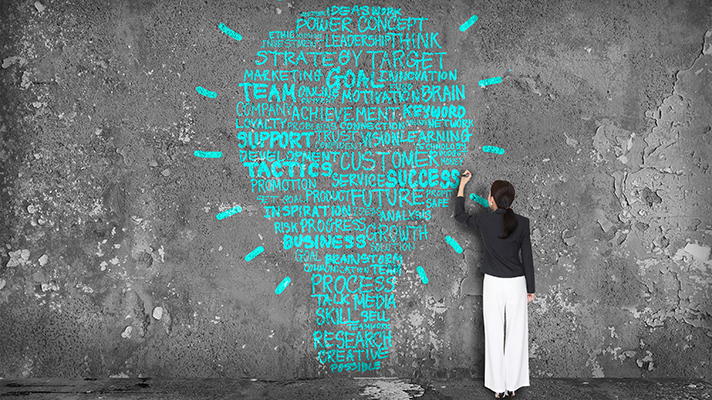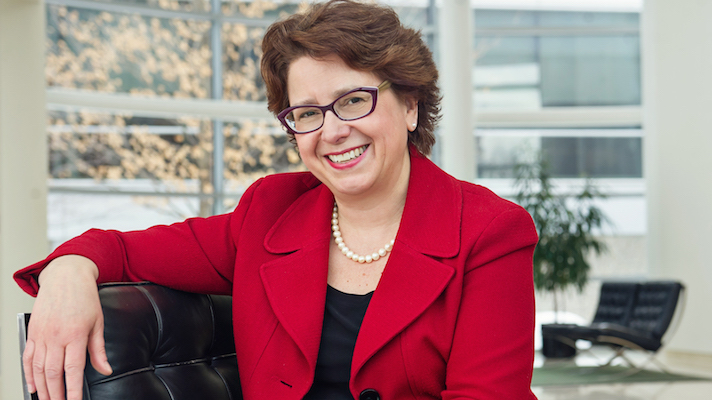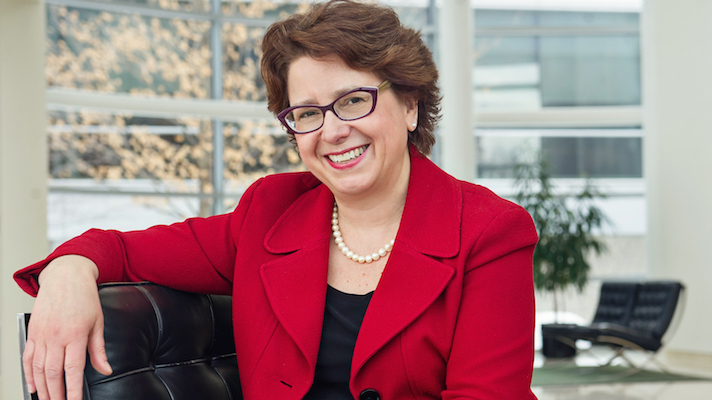Women In Health IT
Most medical things exhibited at CES 2017 are connected devices with apps that collect, analyze, and feedback data and information to users (patients, consumers, caregivers) and health/care providers (physicians, nurses, care coaches, and others who support people in self-care).
While the Internet of Things is generally thought to cover more generic stuff for smart and connected homes, network-connected health and medical technologies are also part of the larger IoT phenomenon. And like health and medical “things” exhibited at #CES2017, other consumer electronics that people will purchase this year ongoing will be connected to the Internet, from refrigerators to cars, to TVs and hearing aids.
Among the most popular connected devices during the 2016 holiday season was Amazon’s Alexa, providing voice-assistant technology in the home: Amazon shoppers bought more Alexa devices than ever in the 2016 holiday season.
Alexa’s base technology can be used for healthcare at home, which was demonstrated by Orbita at the recent Connected Health Conference in December 2016. The company showed voice-activated home health capabilities such as medication adherence, pain management, patient monitoring, and caregiver coordination. This is an early example of home health through home tech assistants, of which Amazon’s Jeff Bezos waxed, “I think health care is going to be one of those industries that is elevated and made better by machine learning and artificial intelligence. And I actually think Echo and Elena do have a role to play in that.” Boston Children’s Hospital is a pioneering healthcare provider, implementing Alexa in KidsMD, which uses the device to support parents caregiving for their kids’ healthcare.
As the Internet of Things takes hold in all aspects of consumer technology adoption, another phenomenon may also simultaneously occur: the Insecurity of Things, coined by Accenture in advance of #CES2017. The Insecurity of Things, Accenture’s John Curran explained to VentureBeat last week, is the challenge that consumers won’t universally trust IoT connected devices until the ongoing security issues around them are resolved.
Health Populi’s Hot Points: I addressed the privacy and security issues of connected health data in my recent paper published by the California HealthCare Foundation, Here’s Looking At You: How Personal Health Information Is Being Tracked And Used. Most consumers are unaware of what’s in the fine print in mobile health opt-in notices, but if people buy a new wearable tech or download an app they’re keen to use, most click through the privacy policy without really knowing what’s gonig to happen to their data.
That information can end up in third party data brokers’ data mines that can be mashed up into consumer profiles and sold to any number of organizations who might benefit from getting up-close-and-personal (albeit, in the dark shadows) with consumers; say, mortgage brokers evaluating loans for home buyers, or employers considering job applications for prospective employees. That’s the privacy aspect of data shared, unwittingly, by health consumers whose diagnosis of, perhaps, depression, or active use of a food-tracking app that documents one’s personal obsession with Twinkies.
From privacy in IoT for health and medicine, we can then consider security. The US Department of Homeland Security published the report, Strategic Principles for Securing the Internet of Things (IoT), in November 2016. The report talked about the growing ubiquity of network-connected devices, from fitness trackers and pacemakers to cars and home thermostats.
Cybersecurity has gained more attention in the age of connected health and the Internet of Healthy Things, the phenomenon discussed by Dr. Joseph Kvedar in his book of the same name. The Homeland Security report mentions the Food and Drug Administration draft guidance on Postmarket Management of Cybersecurity in Medical Devices discussed in a recent blog on the FDA website here.
A Healthcare IT News survey out this week found that the No.1 health IT challenge hospital IT execs cite for 2017 is data security (52 percent), followed by analytics; patient engagement and population health tied for third place. Electronic health records took the fourth position, indicating that now that most healthcare providers have patients’ records digitized, they’re now ready to mash them up and analyze them to manage population health, prevent readmissions, and personalize services for increasingly demanding consumers.
But that data, first, must be secured to prevent cyber-attacks, malware, and personal health data theft. Trust is a precursor to health engagement: patients engage with healthcare stakeholders who earn that trust and authenticity which drives patient satisfaction. Data security in health care is now a patient engagement issue in the growing telehealth and health IoT era. I’ll be asking digital health companies about privacy and security issues all week here at #CES2017.
This week, seven women from across the globe learned that they are the inaugural recipients of HIMSS’s Most Influential Women in Health IT Award, sponsored by Verizon and EY. Our distinguished judges, themselves notable influential women, selected our awardees from more than 140 nominations.
I am honored to share this exciting news with you. Each of these women has demonstrated transformational influence in the health sector. They are at various stages of their careers, which was a defining philosophy of our Awards program – that a woman at any stage of her career can be influential and positively change health and healthcare in meaningful ways.
Each Awardee collaborates and innovates within her area of health IT-related expertise. Each understands, and has acted upon, the power of harnessing the best of IT across many different components of health and healthcare including nursing, pharmacy, medicine, government, public policy, industry and business management. The accomplishments of these women matter not only within their respective organizations, but across the healthcare trajectory.
As many of our nominees demonstrated various characteristics required of the Award, our judges had a challenging time determining our inaugural recipients. The stories and accomplishments are inspiring; one Awardee has positively impacted the lives of millions of citizens, while another has shaped the entire trajectory of the health IT sector. And, we have recipients who have used IT in health settings to utterly transform the ability of a region’s population to remain well, and to receive optimal care when needed.
[Gallery: Meet the winners of HIMSS Most Influential Women in Health IT awards]
Inaugural recipients of HIMSS’s Award are:
Shareefa Al Abulmonem, MSc CPHIMS
Head of eServices
King Faisal Specialist Hospital and Research Center, Saudi Arabia
Marion J. Ball, Ed.D, FHIMSS, FACMI, FAAN, FAHIMA, FCHIME, FMLA
Senior Advisor, IBM-Center for Computational Health, USA
Professor Emerita, Johns Hopkins University
Rachelle Blake, PA
CEO and Managing Director
Omni Med Solutions, Germany
Christina Caraballo, MBA
Senior Healthcare Strategist
Get Real Health, USA
Karen DeSalvo, M.D., MPH, MSc
Acting Assistant Secretary of Health
US Department of Health and Human Services, USA
Karen Guice, M.D., M.P.P.
Acting Assistant Secretary of Defense for Health Affairs
US Department of Defense, USA
Lisa Stump, MS, RPh, FASHP
Chief Information Officer
Yale New Haven Health and Yale School of Medicine, USA
When I reviewed the nominations of our recipients, I found consistent references that captured the accomplishments and drive of these seven leaders. As leaders in their respective careers, these seven women also understand the strategic role IT plays in improving health and healthcare. They acted on that knowledge, and as a result, made patient care better, more accessible and more affordable.
Here are examples from the nominations:
Marion Ball has and is mentoring many young women and men in her long career as a national and international leader in health IT.
Dr. Karen Guice’s leadership has already created profound improvements for our military’s fighting forces, and will shape military medicine’s engagement with the world for the coming decades.
With a focus on innovation, Lisa Stump is leading efforts to experiment and roll out new technologies aimed at improving population health, patient engagement, and the patient’s experience with the healthcare system.
Dr. Karen DeSalvo is a physician who has dedicated her career to improving access to affordable, high quality care for all people, especially vulnerable populations, and promoting overall health.
Recognizing Shareefa Al Abulmonem as one of the Most Influential Woman in Health IT will set the female population of her home, Saudi Arabia, ablaze as to an example of what can be accomplished when you put your passions to purposeful use.
Christina Caraballo is highly respected in the community for her passion to move health IT forward, working with other thought leaders and getting involved in her community to learn, share ideas and solve problems.
Rachelle Blake’s critical thinking and problem solving skills allow her to equip professionals to meet policy, business, and regulatory requirements in everyday practice – to take the possible in health IT and make it real.
[Also: A guide to Women in Health IT happenings at HIMSS17]
HIMSS knows that women in health IT seek resources and community: About a year ago, after surveying over 20,000 women about the current state of women’s professional needs in health IT, we identified a need for expanded recognition of women sector-wide.
Some 83% of respondents said there remains insufficient recognition for the women executives in health IT. And, an overwhelming 85% would find value in a resource recognizing contributions, and supporting the career advancement, of women. Women across all career levels within health IT seek community and resources.
HIMSS is answering that call. Our resources include a biweekly enewsletter from HIMSS Media and HIMSS webinars, podcasts, roundtable reports and more offered online for anyone ready to enjoy and benefit from this information.
Women have been making a difference in health IT for decades, but their accomplishments and contributions are not often visible to all of us. Recognizing these seven recipients of the HIMSS Most Influential Women in Health IT Award changes that scenario. I congratulate them and encourage all of us to embrace and learn from their collaborative spirit and success.
This post originally appeared on this HIMSS site.
Transformative change in health IT is dependent upon an educated and inspired workforce. Encouraging girls to pursue STEM careers will help to bridge the gap in the science and technology workforce. It is vital to create work environments that support and retain women in STEM fields.
Learning Objectives:
Identify methods to develop the next generation of technology innovators and leaders
Use first-hand experience to discuss how to move into management roles and profiling real women in STEM careers
Discuss ways to support and encourage women in technology
Holiday gift lists, baking lists, family fun lists while kids are out of school and “honey do” lists while off from work…..we have personal to do lists everywhere. But as the year ends, it’s interesting to look back on some of the industry based 2016 lists and look ahead at what to expect in 2017.
I’ve compiled some of the most interesting healthcare and technology lists to share as we approach this annual turn of the year. You’ve probably seen some of them already.
There are the best places to work lists where we can all learn best practices to attract and retain talent in a competitive market: Modern Healthcare’s Best Places to Work in Healthcare 2016 and Becker’s 150 Great Places to Work in Healthcare 2016. And more specific to IT, there is Healthcare IT News’ Best Hospital IT Departments 2016. Check out their profiles and possibly get some new ideas to apply in your own organizations.
As healthcare and technology are constantly changing, it is good to check out the highlights from 2016 and trends to watch in the coming year. PWC’s report on top health industry issues of 2017 calls it a year of uncertainty and opportunity. Their 2016 projections were summarized in an article in FierceHealthcare last January. Deloitte shares their views in Health Care Providers Industry Outlook 2017.
Focusing in on technology, what was hot in 2016 and what can we expect in 2017? Healthcare IT News highlights health care IT startups to watch. They also are projecting hot health technologies to watch in 2017. And Health Data Management has identified the 12 top data and IT trends to expect in 2017.
And then there are the people you want to learn from who are helping transform our industry. Modern Healthcare’s list of the 100 most influential includes leaders from government, providers, payors, and private industry. The top 50 experts in health care IT is a two-part list from Health Data Management. Becker’s Hospital Review named their annual top 100 hospital and health system CIOs to know. Congratulations to all the talented industry leaders and experts who have been recognized this year! I was honored to be included again on this last list from Becker’s Hospital Review while I served as interim CIO at University Hospitals in Cleveland.
Last but not least there is social media. You might want to check out some of the top blogs and twitter accounts to stay in the know. CDW Healthcare published a broad list of health-related blogs they consider the top 50 ones in 2016. Health Data Management published a list of 25 top healthcare IT blogs they think you should be reading in late 2015. And Health Data Management named the 55 top HIT and health care experts to follow on Twitter. As I continue to contribute to the industry through social media, it’s great to be included on these last two lists as well!
Wishing you all a happy, healthy, productive, and balanced new year as we slide into 2017!
This post was first published on Sue Schade's Health IT Connect blog.
'PwC is placing a strategic bet that healthcare in America will continue to move to value-based payment and outcomes will continue to evolve in the U.S. under a President Trump. It's a sound bet.'
Nurses, pharmacists, doctors rank highest on the honest and ethics in U.S. professions for 2016.
Itching to get a new position in healthcare IT? There are key questions to answer, and until you do, there will be no clarity.
This STEPS to Value episode explores the current & future state of clinical analytics with HIMSS North America Board member Ruben Amarasingham, President & CEO of PCCI. Ruben also discusses how PCCI’s mission-driven approach to pay equity has been a market differentiator for recruiting top talent.
In this episode of Code Red, our Women in HIT special series continues with HIMSS Privacy & Security Committee member Cathy Petrozzino, Principal, Cybersecurity Partnerships and Information Privacy at MITRE Corporation. Cathy describes her experiences as a cybersecurity pioneer, the importance of confident leadership, and the power of “hidden mentors."
A former CIO gets a close up look of the assessment side








